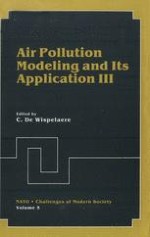1984 | OriginalPaper | Chapter
The Modeling of Dispersion of Heavy Gases
Author : Joseph B. Knox
Published in: Air Pollution Modeling and Its Application III
Publisher: Springer US
Included in: Professional Book Archive
Activate our intelligent search to find suitable subject content or patents.
Select sections of text to find matching patents with Artificial Intelligence. powered by
Select sections of text to find additional relevant content using AI-assisted search. powered by
The motivation for the modeling of heavy gas dispersion lies in the need to estimate the impacts on the surroundings in the event of a leak of heavy gas during normal operations or a much larger release in the event of a major accident. In this presentation, we will consider the phenomenology and/or the evolution of a heavy gas spill from the early times of release to when it is diluted below a prescribed level of toxicity or lower flamability limit (LFL). To the extent the processes contributing to this phenomenology are known, they are described. From this discussion, salient processes emerge whose quantification leads to the structuring of models for heavy gas dispersion. There have been numerous efforts to model the dispersion of such heavy gases, in one to three space dimensions [Van Ulden (1974), Kaiser and Walker (1978), Zeman (1980), Colebrander (1980), Eidsvik (1980), Blackmore et al. (1982), Havens (1982), Taft et al. (1982), Hertel and Teuscher (1982), Ermak et al. (1981), and Chan et al (1982)]. We will describe some typical or representative models in each dimensionality and for various modes of solution (e.g. finite difference and finite element methods).
